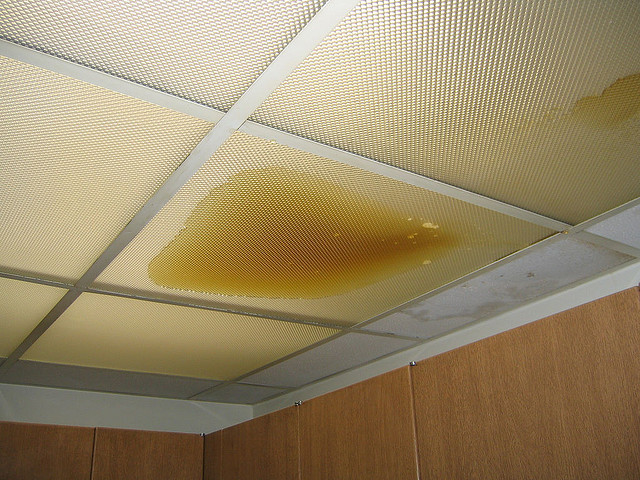Guide To Water Leak Detection In Your Home
Guide To Water Leak Detection In Your Home
Blog Article
Right here below you might get lots of outstanding material on the subject of Leaking water lines.

Early detection of leaking water lines can minimize a potential calamity. Apart from saving you money, it will certainly minimize the worry and also disappointment. The moment you discover a leak, calling your plumber for repair work is the best solution. However, some little water leakages may not be visible. If you can not detect it with your naked eyes, below are some hacks that assist.
1. Analyze the Water Meter
Every house has a water meter. Inspecting it is a surefire manner in which aids you discover leakages. For beginners, switch off all the water sources. Make certain no person will certainly purge, use the faucet, shower, run the washing device or dishwasher. From there, most likely to the meter and watch if it will certainly transform. Given that no one is using it, there ought to be no activities. That suggests a fast-moving leak if it moves. If you spot no changes, wait a hr or two and also inspect back once more. This indicates you might have a sluggish leakage that can even be underground.
2. Examine Water Intake
If you identify abrupt adjustments, in spite of your intake being the very same, it implies that you have leakages in your plumbing system. An unexpected spike in your costs indicates a fast-moving leakage.
At the same time, a steady rise monthly, despite having the same practices, reveals you have a slow-moving leak that's also gradually intensifying. Call a plumber to extensively inspect your property, especially if you feel a warm area on your flooring with piping beneath.
3. Do a Food Coloring Examination
When it comes to water usage, 30% comes from commodes. If the color in some way infiltrates your bowl during that time without flushing, there's a leakage between the storage tank and bowl.
4. Asses Exterior Lines
Do not fail to remember to examine your outside water lines as well. Examination faucets by affixing a yard hose. Must water leak out of the link, you have a loose rubber gasket. Change this and also ensure all links are limited. If you've got an automatic sprinkler, it will certainly aid get it skillfully analyzed and also maintained every year. One little leak can waste lots of water and increase your water costs.
5. Check and also Evaluate the Circumstance
Homeowners must make it a behavior to examine under the sink counters and also even inside cabinets for any kind of bad odor or mold growth. These two warnings indicate a leakage so timely focus is needed. Doing regular evaluations, also bi-annually, can conserve you from a significant problem.
Examine for stainings and damaging as the majority of devices and pipelines have a life expectancy. If you believe leaking water lines in your plumbing system, do not wait for it to rise.
Early detection of leaking water lines can mitigate a prospective calamity. Some small water leakages may not be visible. Inspecting it is a guaranteed method that aids you discover leaks. One little leakage can waste bunches of water and spike your water costs.
If you presume dripping water lines in your plumbing system, do not wait for it to intensify.
WARNING SIGNS OF WATER LEAKAGE BEHIND THE WALL
PERSISTENT MUSTY ODORS
As water slowly drips from a leaky pipe inside the wall, flooring and sheetrock stay damp and develop an odor similar to wet cardboard. It generates a musty smell that can help you find hidden leaks.
MOLD IN UNUSUAL AREAS
Mold usually grows in wet areas like kitchens, baths and laundry rooms. If you spot the stuff on walls or baseboards in other rooms of the house, it’s a good indicator of undetected water leaks.
STAINS THAT GROW
When mold thrives around a leaky pipe, it sometimes takes hold on the inside surface of the affected wall. A growing stain on otherwise clean sheetrock is often your sign of a hidden plumbing problem.
PEELING OR BUBBLING WALLPAPER / PAINT
This clue is easy to miss in rooms that don’t get much use. When you see wallpaper separating along seams or paint bubbling or flaking off the wall, blame sheetrock that stays wet because of an undetected leak.
BUCKLED CEILINGS AND STAINED FLOORS
If ceilings or floors in bathrooms, kitchens or laundry areas develop structural problems, don’t rule out constant damp inside the walls. Wet sheetrock can affect adjacent framing, flooring and ceilings.
https://www.servicemasterbyzaba.com/blog/how-to-detect-water-leakage-in-walls/

As a person who reads about Locating water leaks, I was thinking sharing that piece of content was a good thing. Sharing is caring. You won't know, you may very well be helping someone out. Thank-you for your time invested reading it.
Report this page